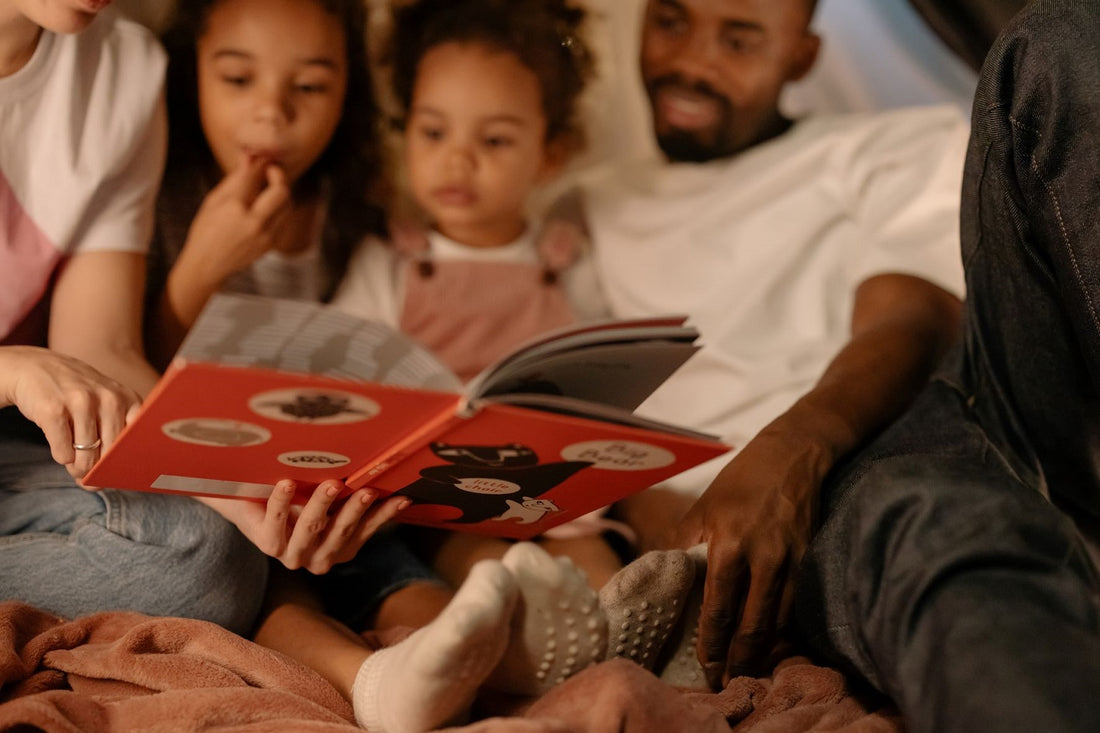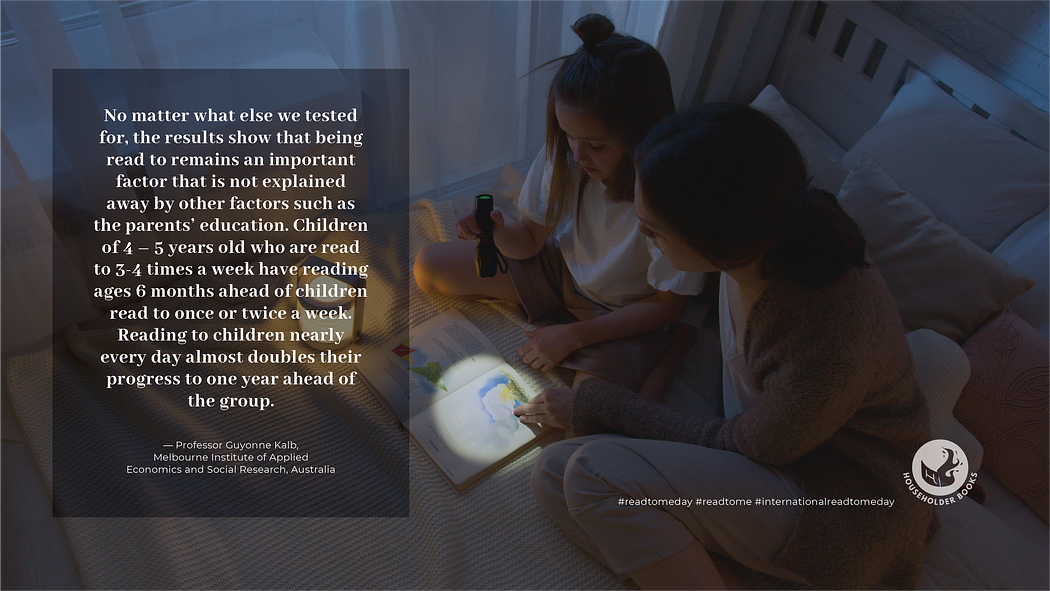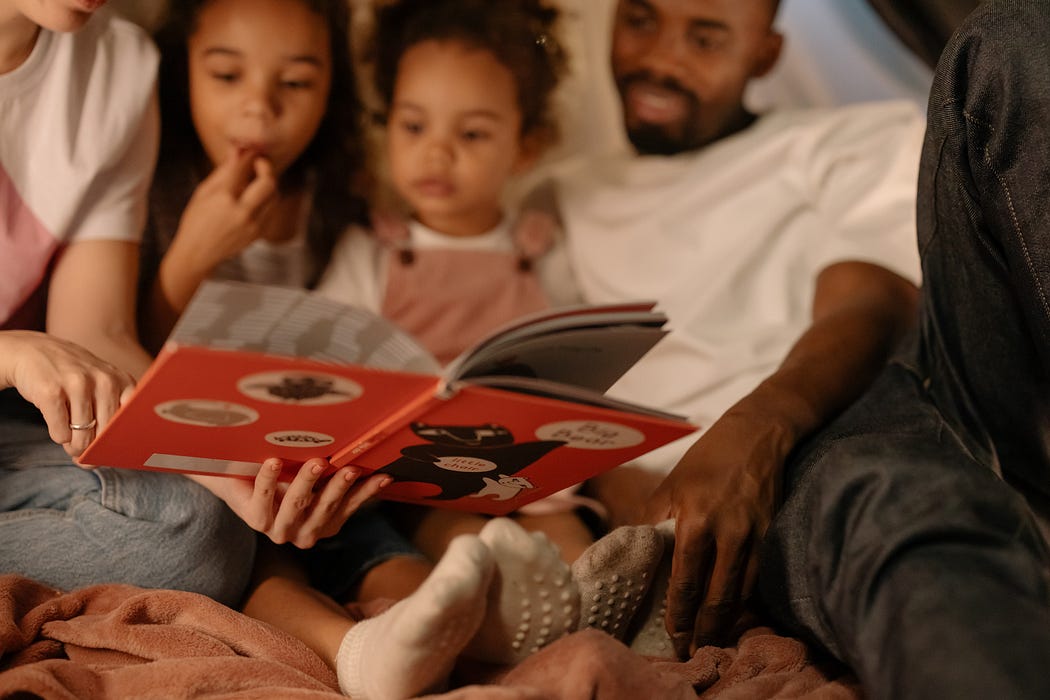
Read to Me: The importance of reading to children
Share
Do you know that reading to someone creates closeness between two people and brings comfort to those we share it with, even more than watching a movie together? Even though they cannot read themselves, reading to babies helps build bonds, vocabulary, and habits. For toddlers and older children, reading has shown clear cognitive and socioemotional benefits.
Today is the International Read To Me Day.
This holiday was established by the Child Writes Foundation to encourage the foundations of literacy by reading to children. In many countries around the world, adult literacy is still a problem and it is apparent that being read to as a child helps to encourage literacy and a love of reading in adults.
Sound On!
Before children’s eyes can read for themselves, their ears can hear you read to them. What you send into their little ears becomes the “sound” foundation for their “brain house.” The meaningful words you speak into their ears will help your child make sense of the words that come later when they begin reading with their own eyes.

Why should you read to a child?
Reading to kids has clear cognitive and socioemotional benefits.
Brain scans show that hearing stories strengthens the part of the brain associated with visual imagery, story comprehension, and word meaning. Reading also fosters a child’s character and socioemotional development. A recent study showed that reading to young children is linked to decreased levels of aggression, hyperactivity, and attention difficulties. When you read to young children, they learn words that help them express difficult feelings like anger or sadness. They are able to better process feelings, express themselves, and better control their behavior when they experience challenging situations.
Reading conditions children to like learning
Human beings are pleasure-centered. It is a scientific fact that we approach the things that cause pleasure and try to avoid that which causes displeasure or pain. The recognition of pleasure and displeasure forms from infancy. Every time you read to a young child, you’re sending a “pleasure” message to the child’s brain, conditioning it to associate books with pleasure.
Reading to children better prepares them for school and life
Kids who are read only one book a day will hear at least 290,000 more words by age 5 than those who don’t regularly read books with a parent or caregiver, and the number of books increases the gap. By the time they start school, children who hear more vocabulary words are better prepared to identify words in print and pick up reading skills more quickly and easily. Reading to children differs from everyday conversations.

A good children’s book is three times richer in vocabulary than conversation. Books expose children to concepts they may not have experienced before, for example, about an animal in a different geographical area, or a foreign country, and introduces words that are more complex and difficult. These words are unlikely to show up in everyday conversation and this provides new learning opportunities for children. When they eventually experience those things in real life or learn about them in school, learning and assimilation are increased.
Reading to kids provides a unique opportunity to engage them
Parents and caregivers have the opportunity to talk about the book they are reading with their children. You can ask questions that ask the children to describe something, or expand the narrative (for example, “What’s more?” “How else?” or “Why do you think that?”). You can ask questions that make them infer things (for example, “What happens next” or “Why do you think the character is doing that”). In addition to reinforcing vocabulary or introducing new words, these extra conversations that usually occur provide lots of language and stimulation to kids, which in turn strengthens the part of the brain that is responsible for language.
Studies have shown that the differences in reading and cognitive skills between kids who are read to and those who are not, are not related to the child’s family background or home environment but are the direct result of how frequently they have been read to prior to starting school.
No matter what else we tested for, the results show that being read to remains an important factor that is not explained away by other factors such as the parents’ education. Children of 4–5 years old who are read to 3–4 times a week have reading ages 6 months ahead of children read to once or twice a week. Reading to children nearly every day almost doubles their progress to one year ahead of the group.
— Professor Guyonne Kalb, Melbourne Institute of Applied Economics and Social Research, Australia
Read To Me
Yes, that is my request to you — parents, caregivers, and lovers of children — every day. That is my request to you, especially today.
